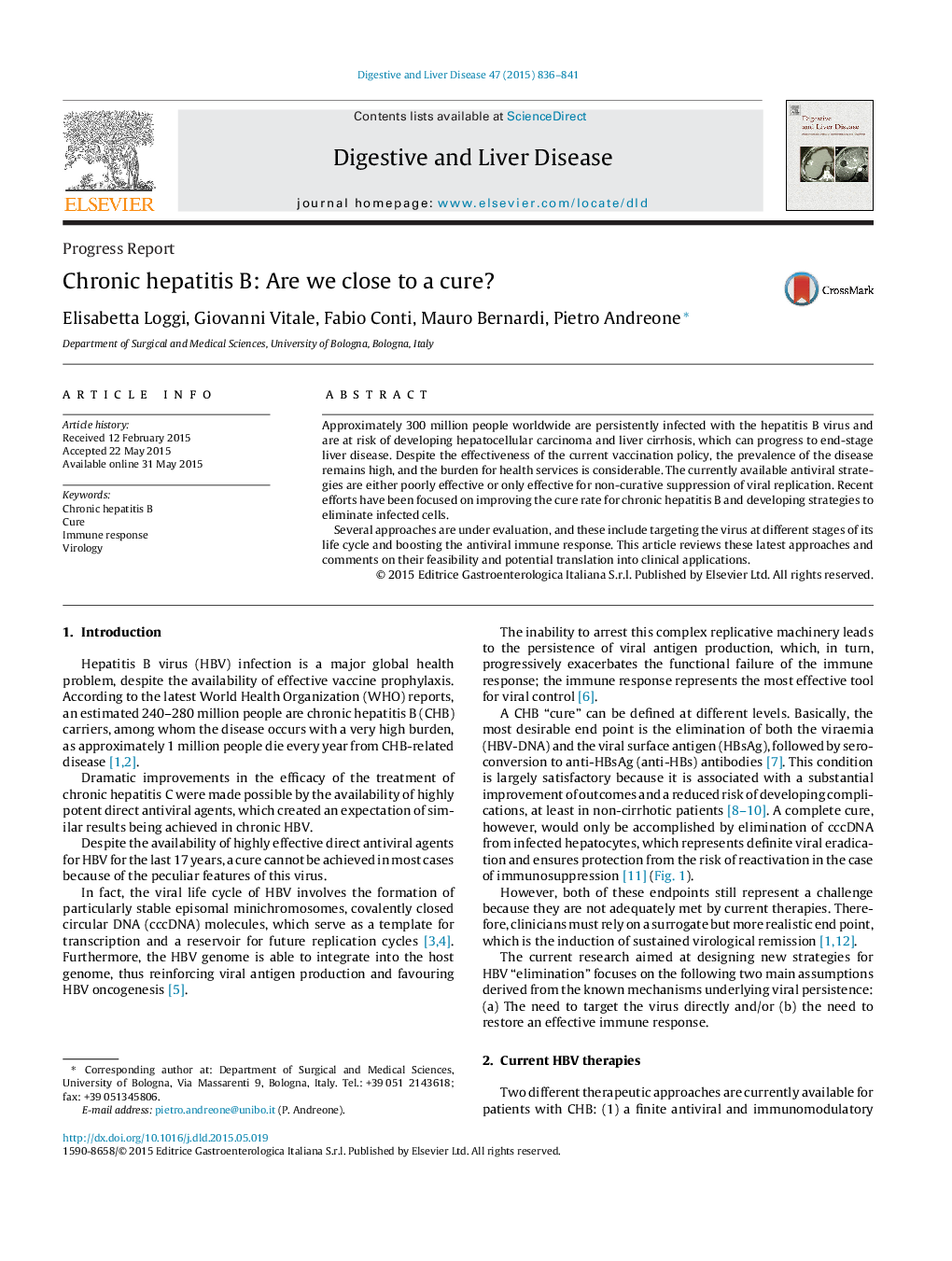| Article ID | Journal | Published Year | Pages | File Type |
|---|---|---|---|---|
| 6088017 | Digestive and Liver Disease | 2015 | 6 Pages |
Approximately 300 million people worldwide are persistently infected with the hepatitis B virus and are at risk of developing hepatocellular carcinoma and liver cirrhosis, which can progress to end-stage liver disease. Despite the effectiveness of the current vaccination policy, the prevalence of the disease remains high, and the burden for health services is considerable. The currently available antiviral strategies are either poorly effective or only effective for non-curative suppression of viral replication. Recent efforts have been focused on improving the cure rate for chronic hepatitis B and developing strategies to eliminate infected cells.Several approaches are under evaluation, and these include targeting the virus at different stages of its life cycle and boosting the antiviral immune response. This article reviews these latest approaches and comments on their feasibility and potential translation into clinical applications.
